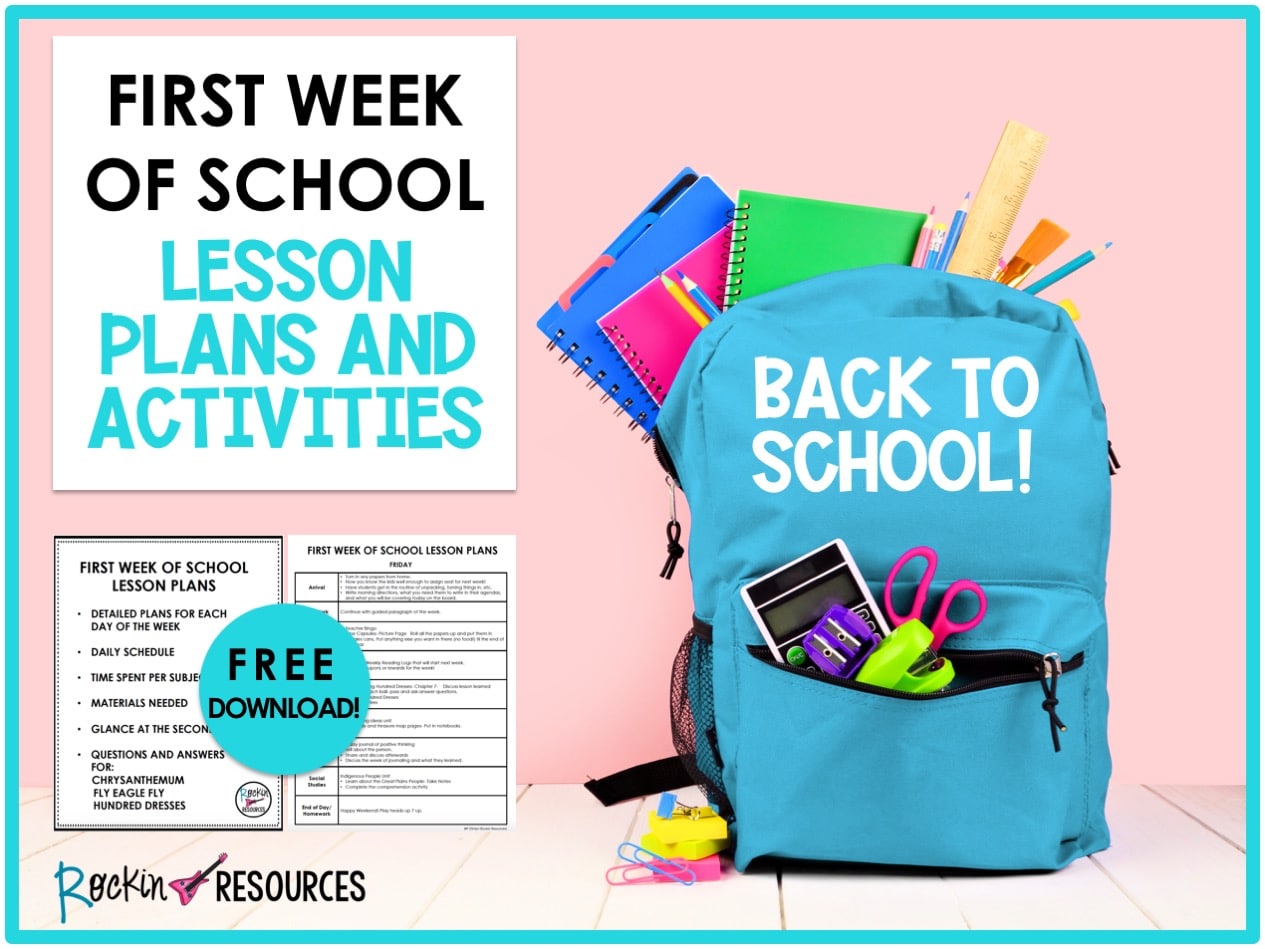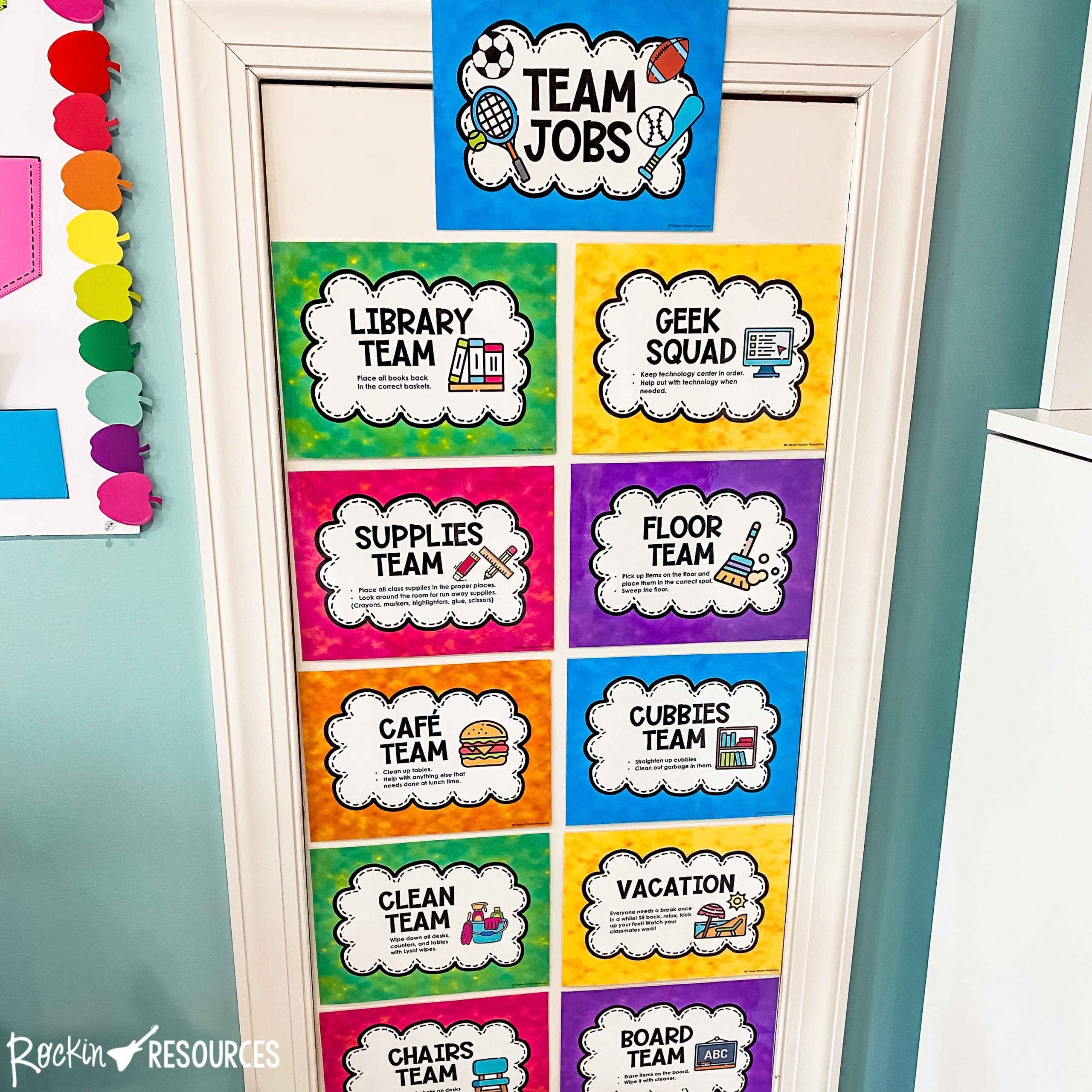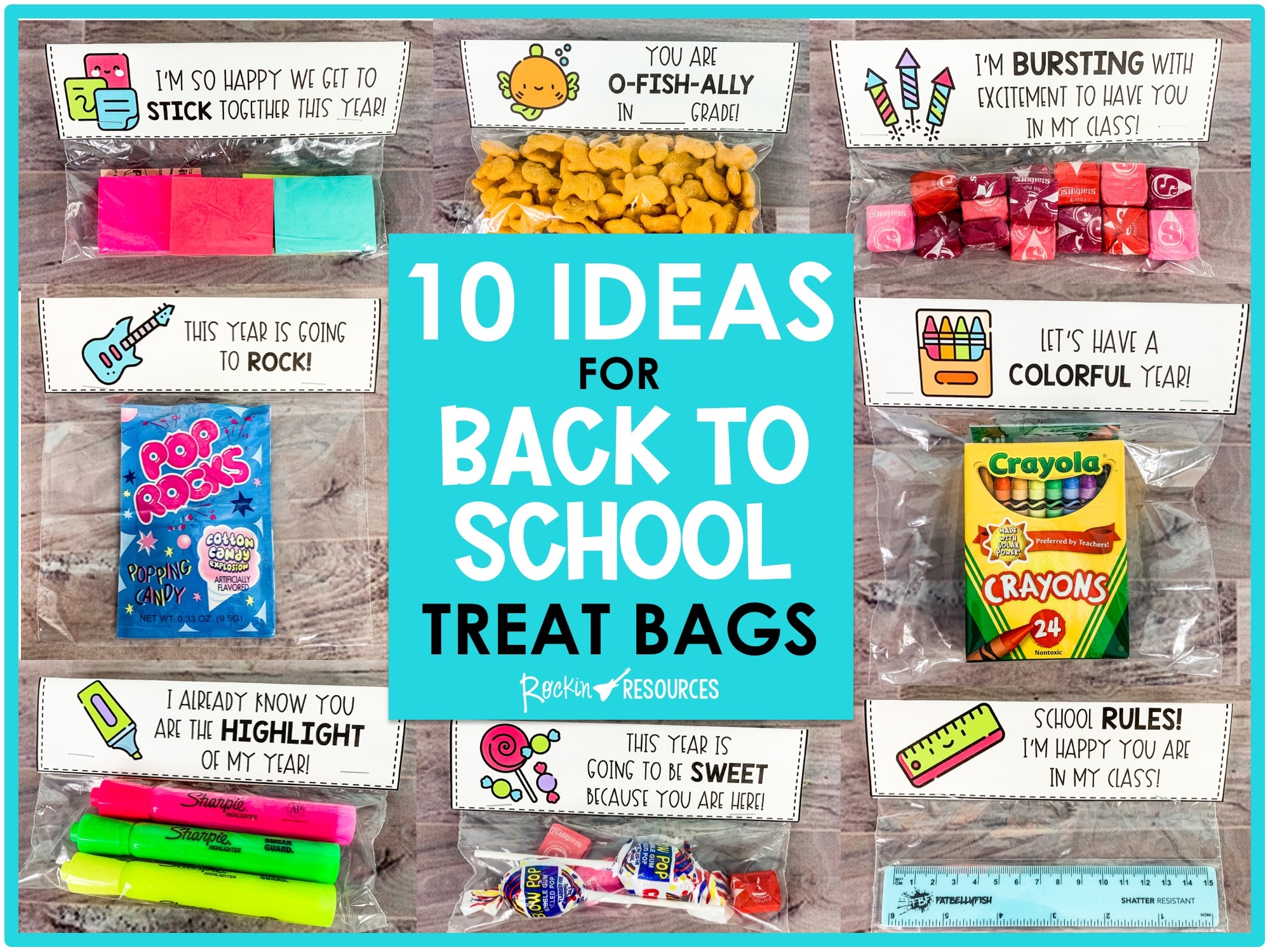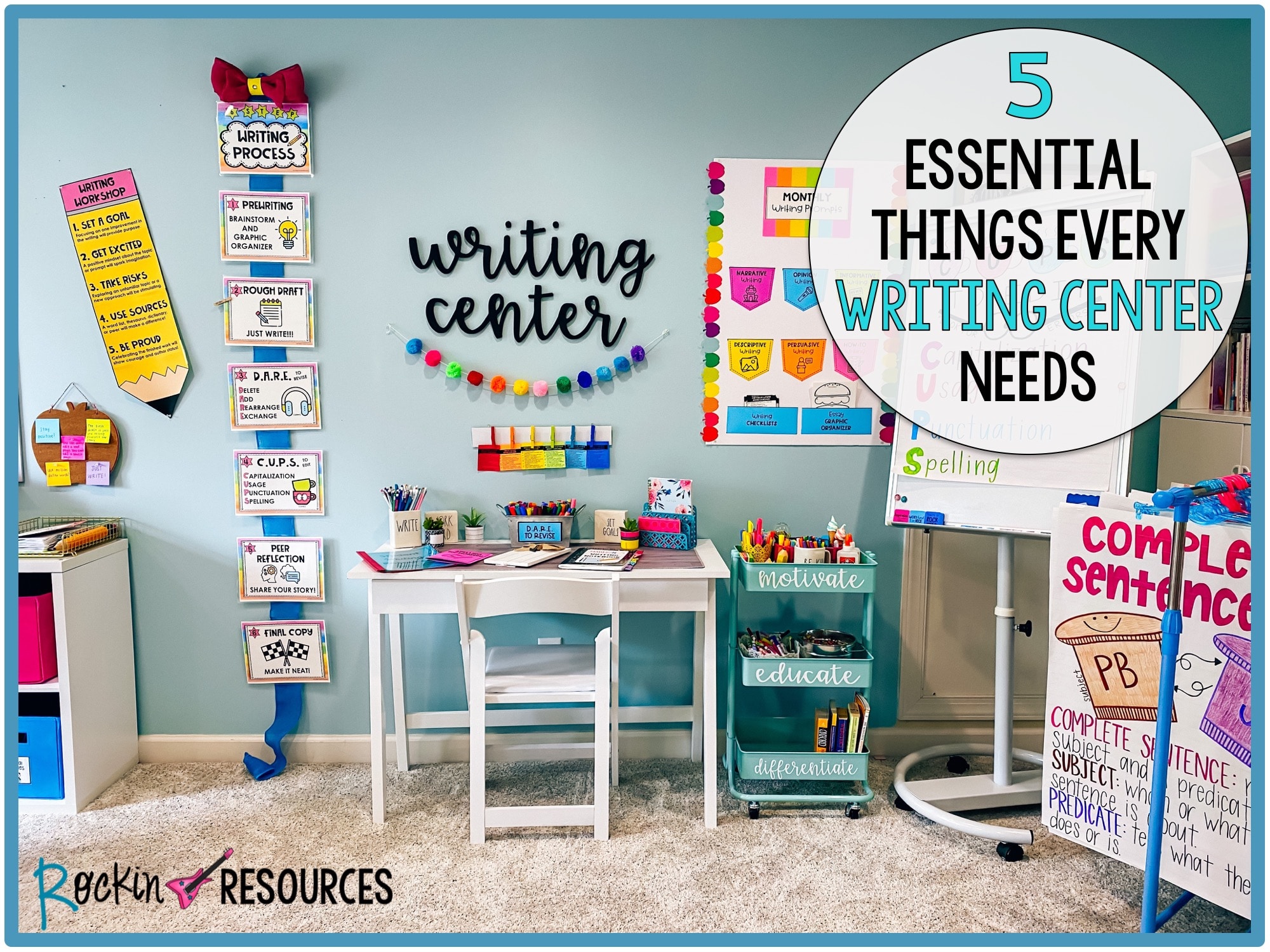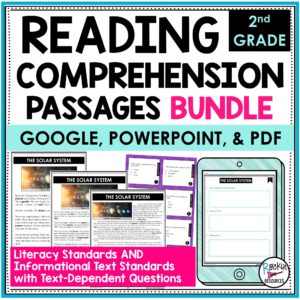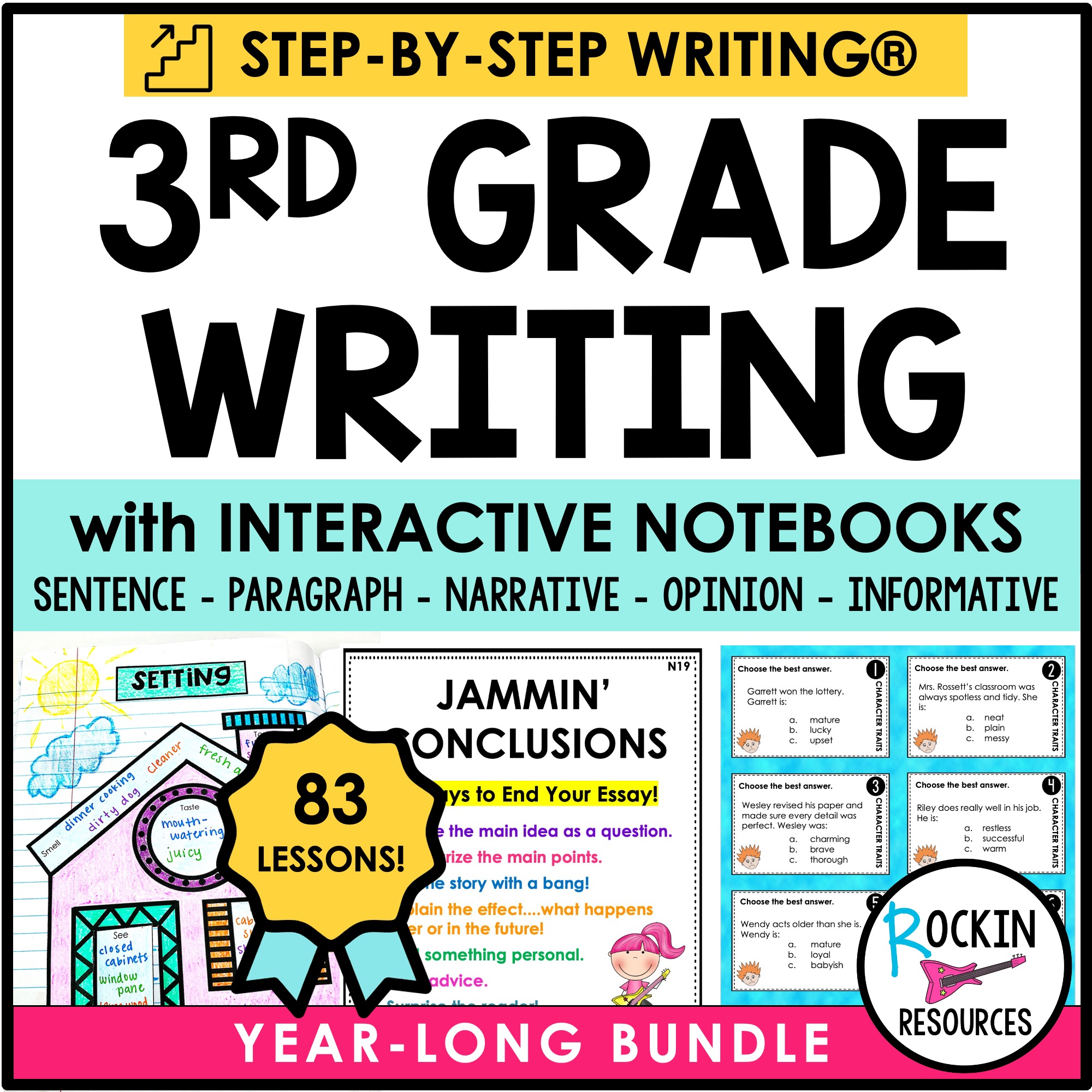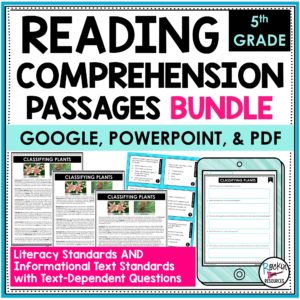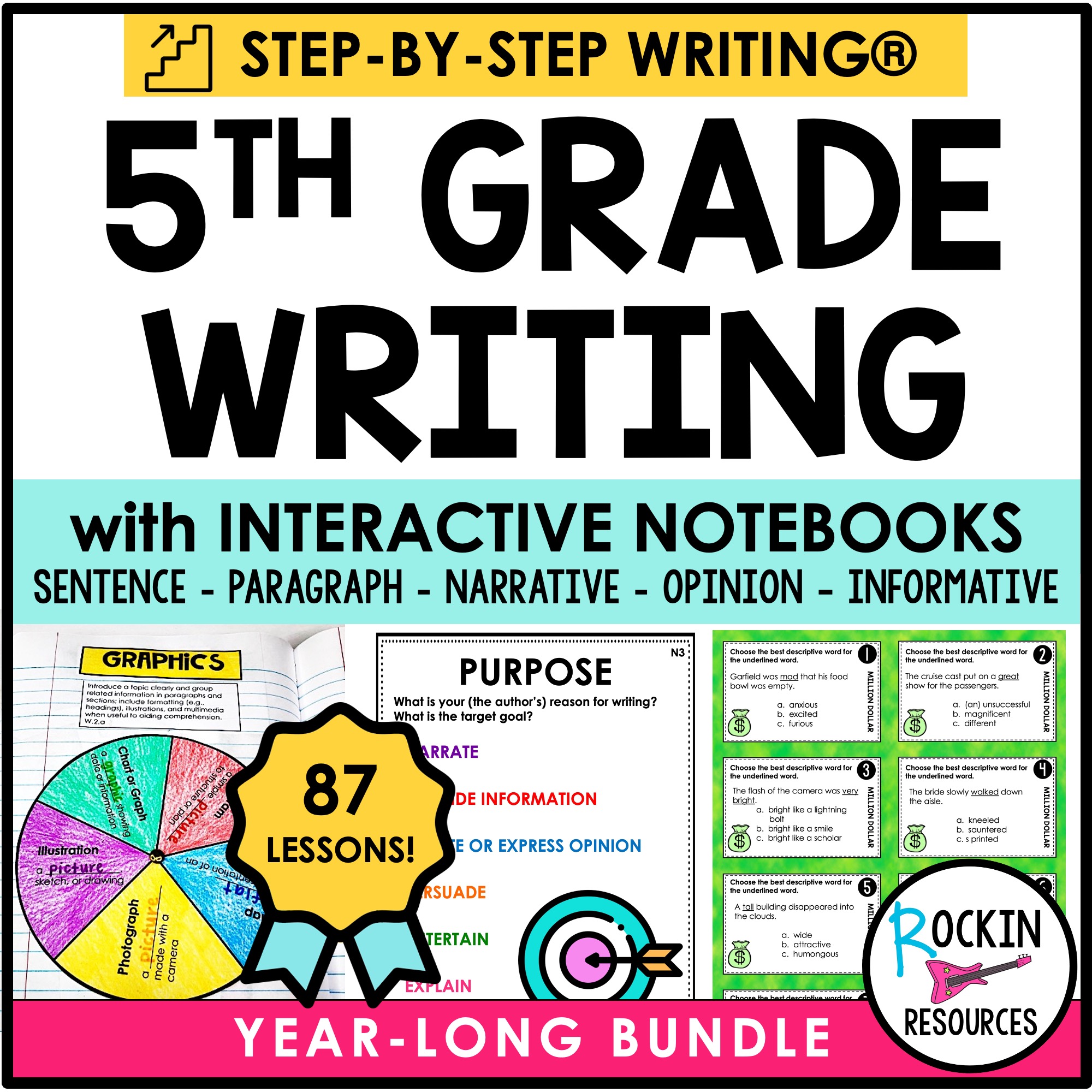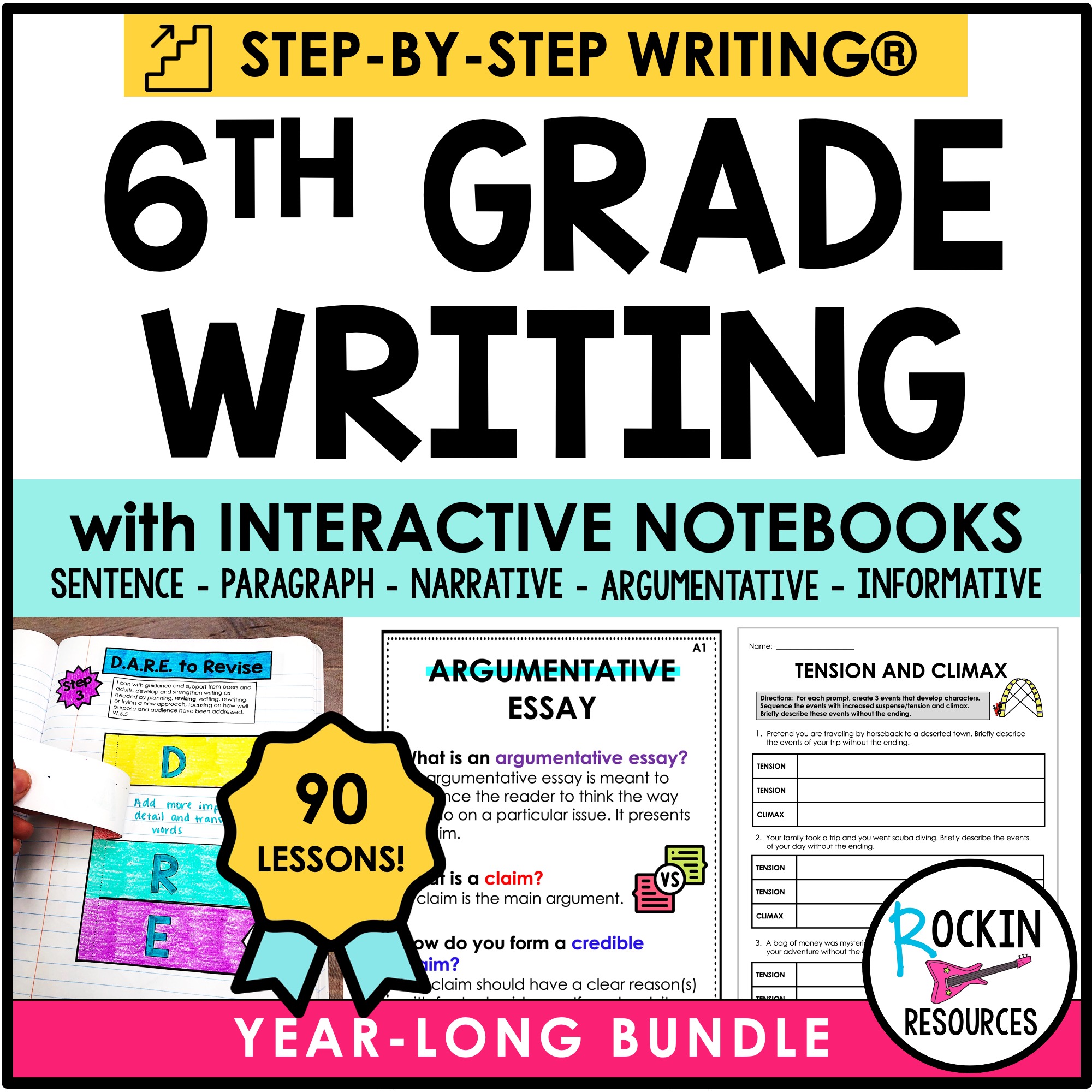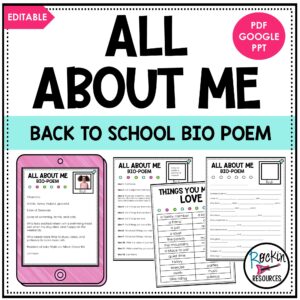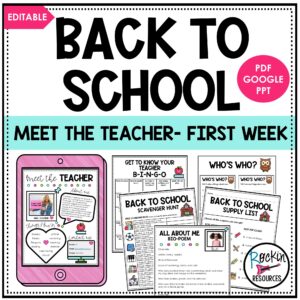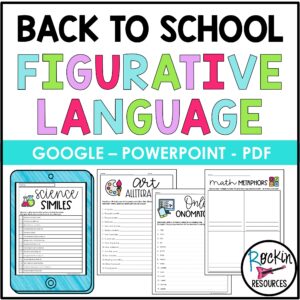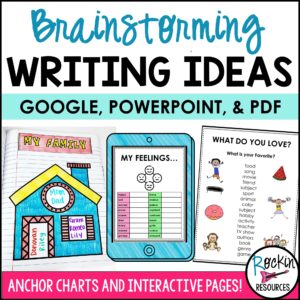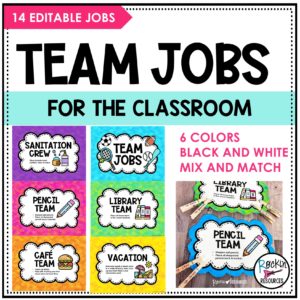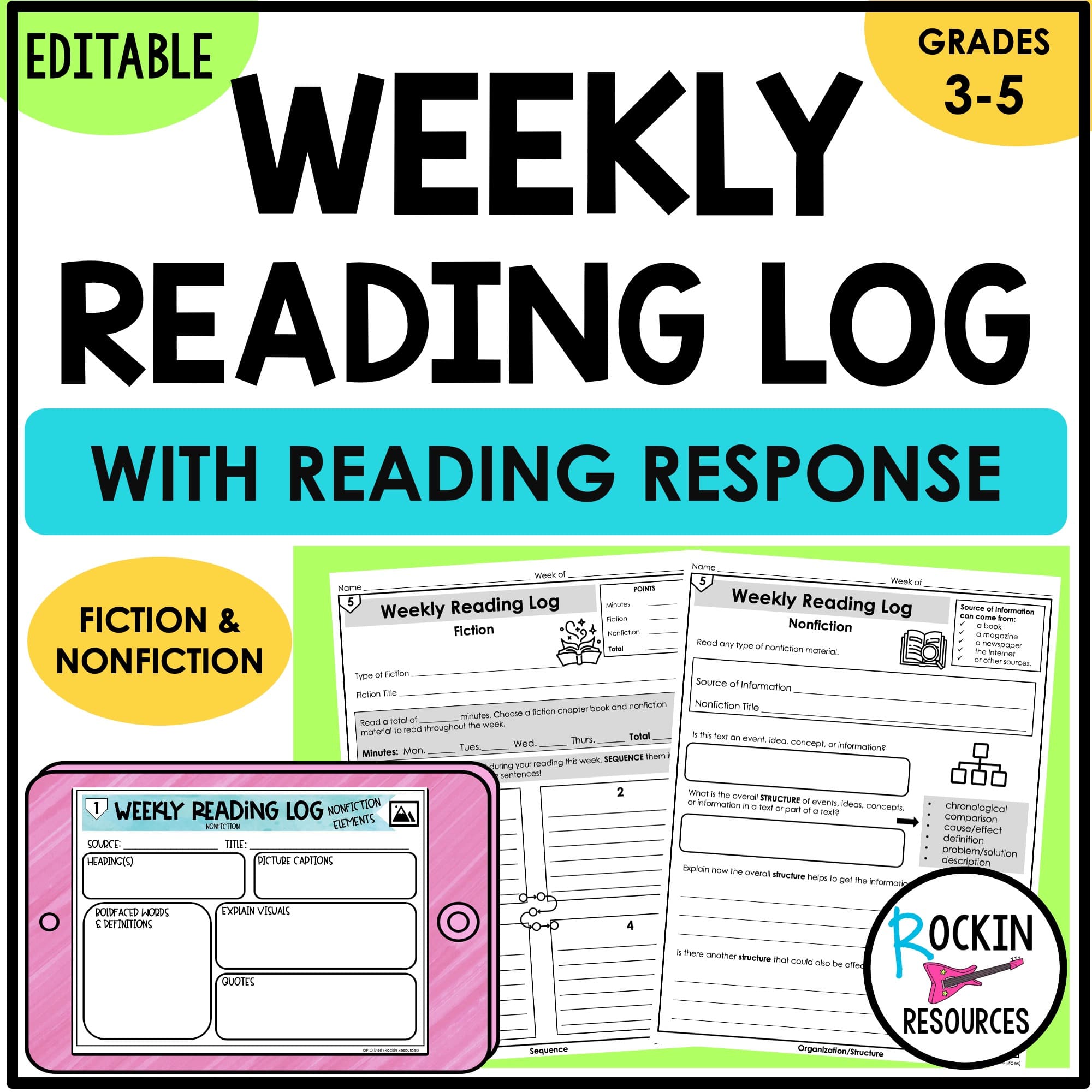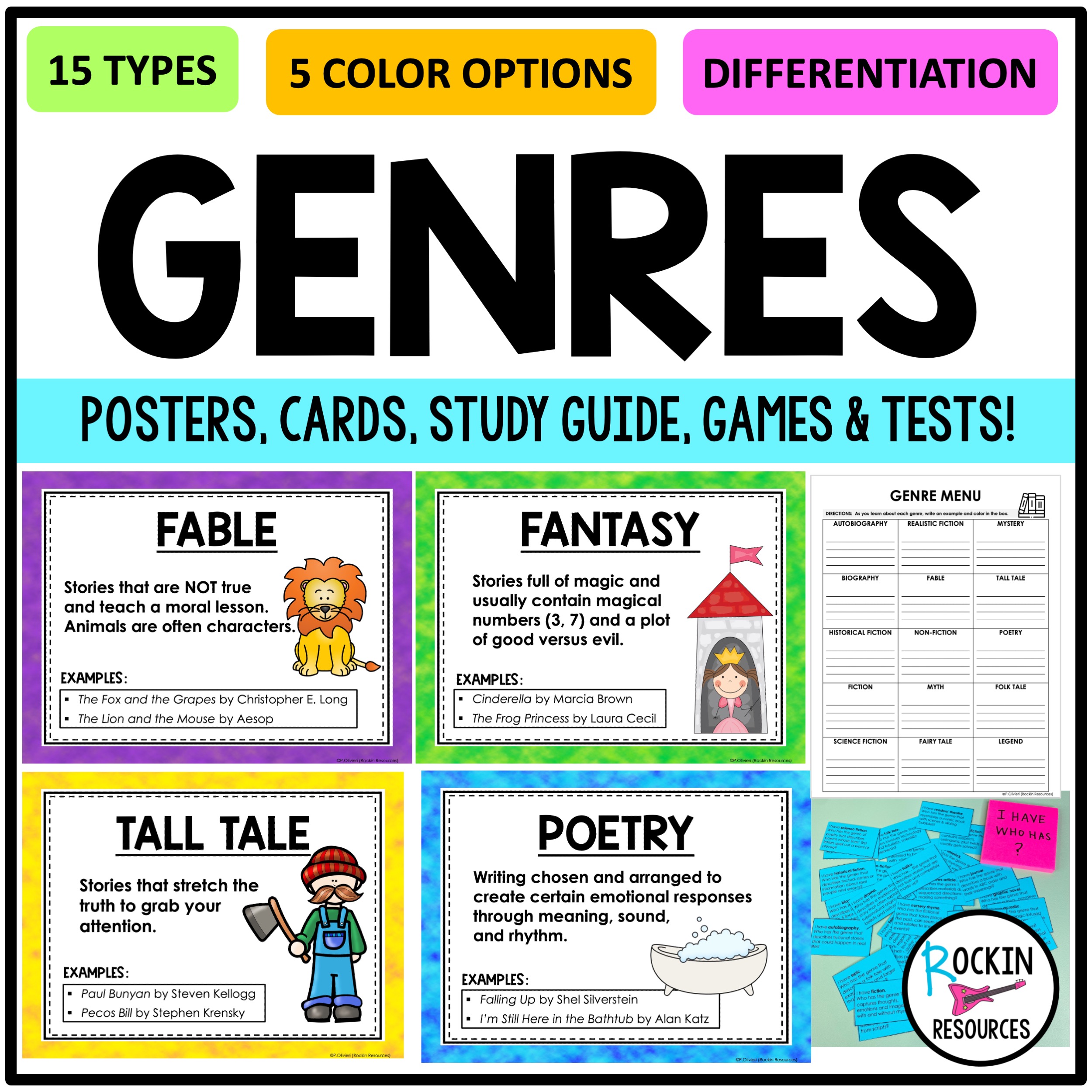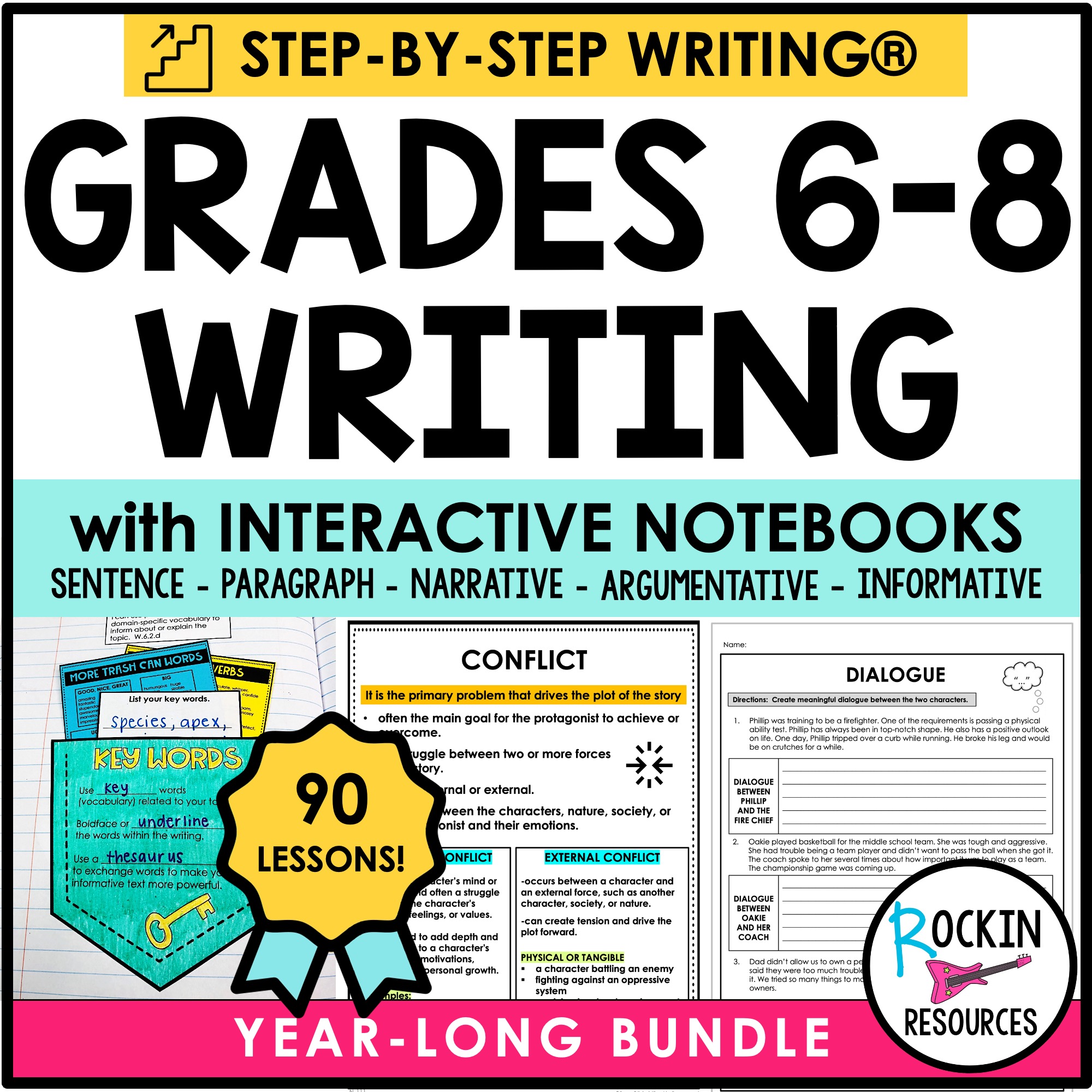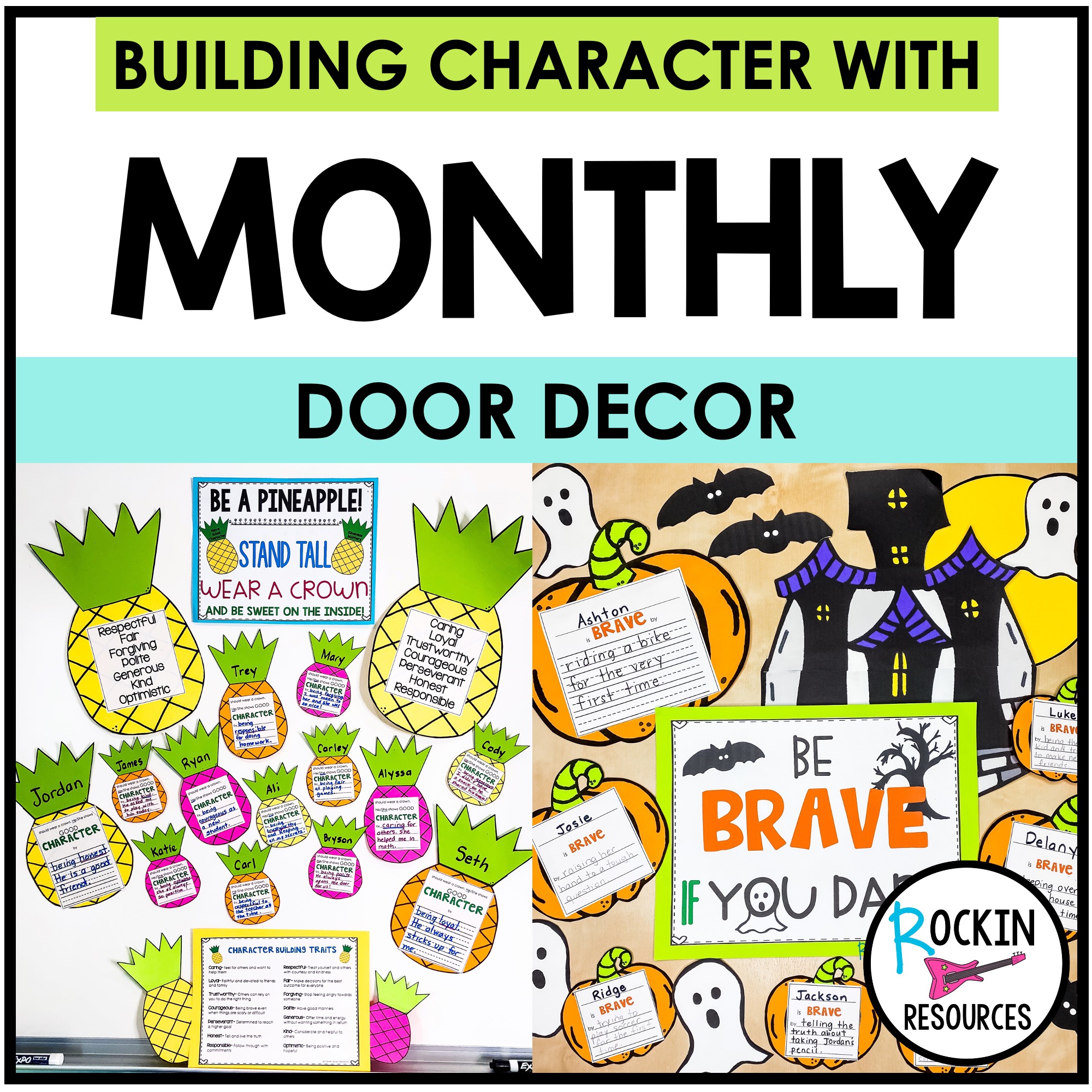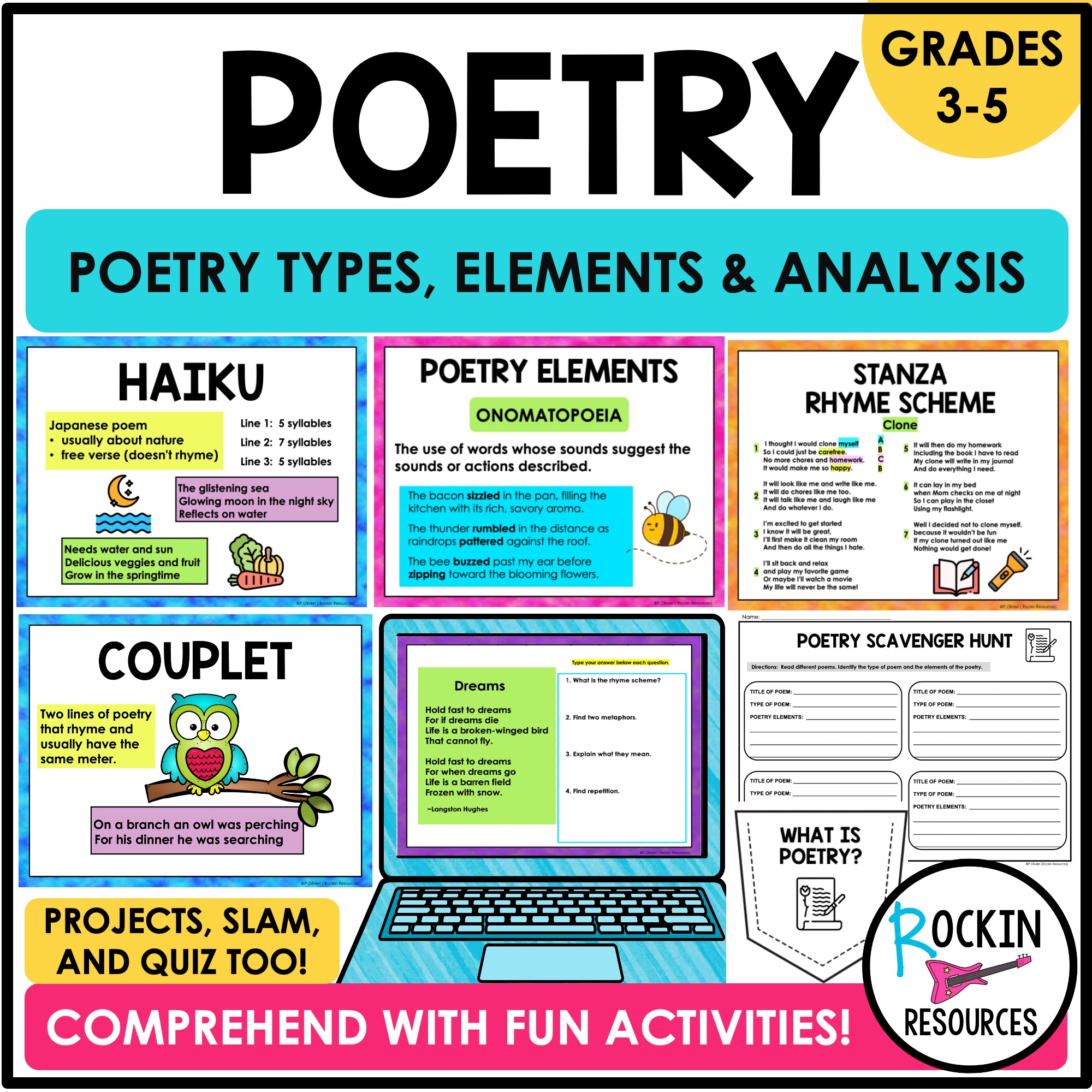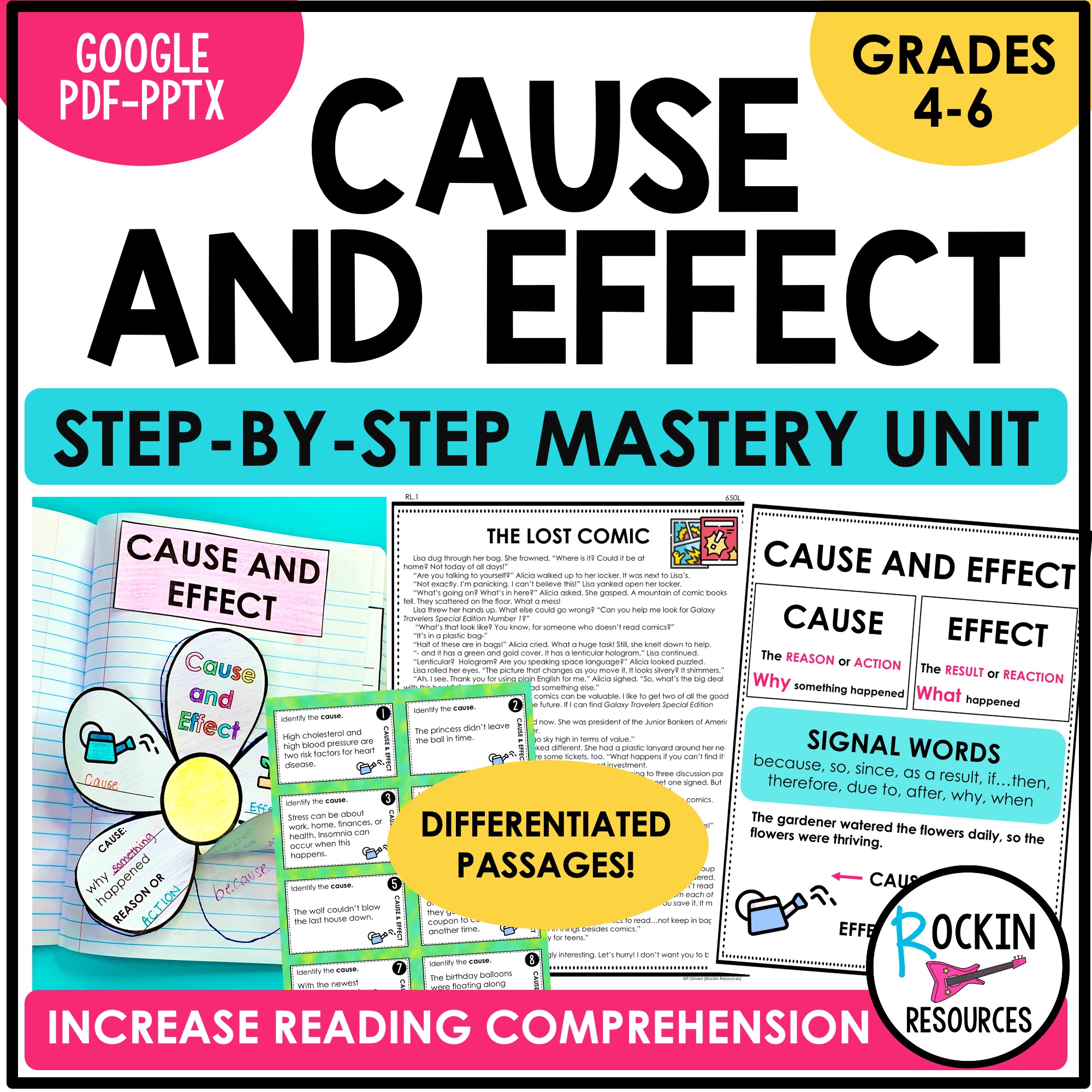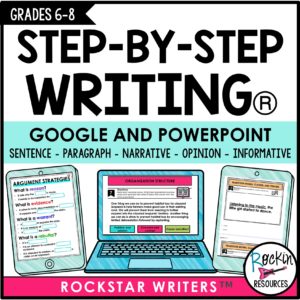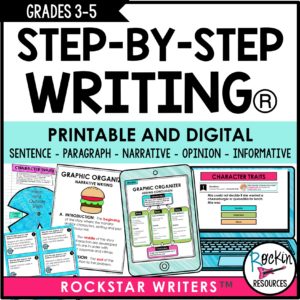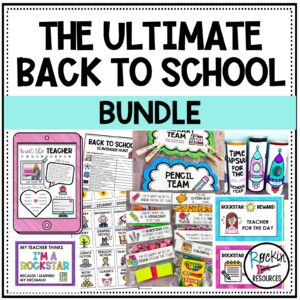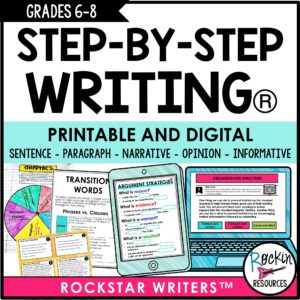The countdown is on! Teachers, it’s almost time for you and your students to go BACK TO SCHOOL! Are you ready for a fresh crop of young minds? The beginning of each year is always exciting. In order to get the BEST out of your students, it’s important to start the year off RIGHT! I thought I’d show you my lesson plans to help you make the MOST out of your Back-to-School experience this year. Check out my FIRST WEEK OF SCHOOL LESSON PLANS AND ACTIVITIES!
Before students walk into your classroom for the first time, they should have an idea of who they’re going to be spending their year with. Because of that, I like to send a little “about me” in a newsletter to welcome my students before the school year begins. When you have MEET THE TEACHER night, students AND parents will comment on something from your newsletter. It is a great way to break the ice! Then hang it by your door. If you have a large class and are short on funds, send a postcard instead of a letter. It may not have a ton of information, but the students will certainly appreciate hearing from you!
The kids are walking in your door. What do you do? Here are some ideas on what to do the FIRST WEEK with your new kiddos. If you would also like a suggested class schedule, a glance at units, and questions to go along with the stories this week,https://embed.lpcontent.net/leadboxes/current/embed.js CLICK HERE!
https://embed.lpcontent.net/leadboxes/current/embed.js
https://embed.lpcontent.net/leadboxes/current/embed.js

PRIOR TO STUDENT ARRIVAL
First and foremost, make your students feel comfortable! I like to begin by letting the class know that we’re not just a class…we’re a FAMILY! And since I like to rock out, I always play “We Are Family” as they are walking in the door. Choose a song that resonates with you and have it playing! I also like to have a little treat bag waiting for them. It doesn’t have to be candy. It can be class supplies or something in that vein! It will give them a warm, fuzzy feeling about being with you all year. Then put directions on the board regarding what to unpack, what to put in cubbies, what they should keep at their seats, etc. (I usually have them keep supplies at their desks, so we can go through them together.)
AS STUDENTS ARRIVE
If you want to wait to get to know the students a little more before assigning seats, get a deck of cards! If you have 4 students per group, assign each group of desks a number or face card. Pull out the right number of cards for the number of students from the deck. If they pick out a K, they go to the King’s Table, etc. Then after the first week, you can assign seats that best works for your new group of students!
BEFORE YOU GET STARTED
Double, triple-check transportation cards and emergency cards.
GET TO KNOW YOU:
- TIME CAPSULES: Your students know who YOU ARE, now it’s time for you to get to know THEM. There are a lot of different ways to do this, but time capsules are one of my favorite ways. What are time capsules? Students write about their favorite things, write a paragraph or essay, write down goals and dreams, and create illustrations. We place them in a decorated Pringle’s can. We also add student photos from the beginning of the year. Then at the end of the year, we do the same thing and compare their growth from the beginning of the year! On the first day, I have them decorate the Pringle’s can to look like a time capsule.
- MEET THE TEACHER: At the beginning of the first day of class, I like to go over my “about me” just in case any students missed out on the newsletter I sent home. (Hopefully, they pay attention, because there will be a related activity later in the week!)
- SCAVENGER HUNT: Create a list of things about the students. Have them find someone who is an only child, has 4 siblings, was born in another state, likes sports, etc. They cannot write the same name in any of the blanks. Participate with them! They will love it!
RULES AND ROUTINES
- THE BASICS: Create a list of rules and expectations. This is important because your students need STRUCTURE. Be sure to explain to your students what you expect when it comes to homework, lining up, what to put in cubbies, how to turn in work, when to be quiet, recess rules, and signals you will be using to get their attention
- https://embed.lpcontent.net/leadboxes/current/embed.jsCLASS CONSTITUTION: Develop a class constitution with your class. You can either develop the rules yourself and have students all sign it, or you can have students develop the rules together and have them sign it. If doing the latter of the two, you can always guide them to any rules you think are important. Coming up with their own rules empowers them! There are 5 basic rules that I used every year.
- Raise your hand for permission to speak.
- Keep your hands, feet, and objects to yourself.
- Be prepared.
- Follow directions the first time.
- Be polite to others.
- REWARD SYSTEM: Explain your rewards system. Do you have individual rewards or class rewards or both? For individual rewards, I like to have a treasure chest of items anywhere from snacks, to pencils, to homework passes. Once the students obtain 5 coupons, they get a trip to the treasure chest. Set a specific time of day to do this like the end of the day so it doesn’t break up instruction time. For class rewards, set a goal together and choose what the reward will be. Filling up marbles or checkers in a jar? Once that happens, what does the class get as a reward? Movie? Extra recess? Every time the class is on track or impressing you, move a marble or checker into the jar! Positive classroom management works like a charm!
READING WORKSHOP
- CHRYSANTHEMUM: Read Chrysanthemum by Kevin Henkes. Discuss bullying and different names. Count letters and syllables in each student’s name and create a graph. Discuss how your class is a safe place and no bullying and teasing will be tolerated. (See lesson plans document for questions to ask.)
- GENRE STUDY: Show the class library and review the different types of genres. Hand out a genre study guide and quiz them at the end of the week.

WRITING WORKSHOP
- https://embed.lpcontent.net/leadboxes/current/embed.jsNAME POEM: Name poems are a great way to get to know one another! Either have them draw and color themselves freehand or provide a template for them to finish drawing. Then write an acrostic poem using their name. Allow students to share and discuss words for different letters. Dictionaries help. This is fun and the result is always TOO CUTE!
- SETTING UP WRITING NOTEBOOKS: Hand out instructions to decorate the cover of their writing notebooks and assign it for homework.
WORD WORK
- GREEK AND LATIN: Point out the GREEK AND LATIN Word Wall. Explain prefixes, suffixes, and root words. – We will begin Unit 1 next week.
- 180 DAY JOURNAL OF POSITIVE THINKING: Get started in 180 DAY JOURNAL OF POSITIVE THINKING. Explain how to look up word meanings and analyze quotes.
END OF THE DAY
Go over dismissal rules, send home notes of any supplies still needed for class and hand out a happy note to take home.
HOMEWORK
Send home parent homework. This is a survey so parents can share information about their child. Then decorate the writing notebook. Have them turn it in on Wednesday.

PRIOR TO STUDENT ARRIVAL
Write information on the board: Where to put homework, where to put parent homework, etc.
Then play music as students are walking in.
THINGS TO CHECK IN THE AM
- Take attendance and review any parent notes.
- Note any transportation changes.
- Collect any parent surveys or supplies that come in.
GET TO KNOW YOU
- TELEPHONE: Don’t forget, some of your students may not know each other yet. Icebreakers and team-building activities are a good way to get your students involved with one another! An example I’ve used over the years is playing a game like ‘telephone’ where you whisper something into one person’s ear, they whisper it into the next person’s ear, and so on. In the end, the secret you whispered will come back to you, but it may have changed through the telephone line. This usually gets everyone laughing!
- STUDENT SURVEYS: Student and parent surveys are important and beneficial to you, your students, and your students’ parents. This gives your students and their parents the opportunity to tell you anything they need you to know before the start of the school year.
- WHO’S WHO: On a piece of paper, ask students to write down three things about themselves. Then you read off each one and have students guess who it is.
- TIME CAPSULES: One page to put in the time capsules is a favorites page. Have students list their favorite color, friends, books, etc.
RULES AND ROUTINES
- WALK AND TALK: Your classroom is where your students will spend the majority of their day, so show them around! I like to walk and talk, making my way around the room, showing my students where everything is and how I like to keep it. Explain student mailboxes and the teacher’s mailbox. Explain the centers, bulletin boards, and where to put supplies, etc.
- TEAM JOBS: Since I look at my students as my family, I also expect everyone to pitch in and help out around the classroom. Let your students do the cleanup! The best way to do this is by assigning TEAM JOBS in the classroom every week. Team jobs means multiple people get the same job and everyone gets a job except who is on vacation!
READING WORKSHOP
- HUNDRED DRESSES: Start reading Hundred Dresses together. Read chapters 1 and 2 together. (See Lesson plans document for questions to ask.)
- FLY EAGLE FLY: Read this as a read-aloud. Discuss goals and perseverance. (See Lesson plans document for questions to ask.)
- DEVELOPING GOALS: Add students’ goals to their time capsules.
WRITING WORKSHOP
- WRITING CENTER: Explain how they will use writing notebooks and the writing center. Talk about what the supplies in the center are used for.
- WRITING PROMPT: Pick a prompt from the monthly writing prompts. Ask students to just write. Writing instruction will start next week! Add this writing sample to their time capsule!
WORD WORK
180 DAY JOURNAL OF POSITIVE THINKING: Work together as a whole group or in small groups to get students used to the process. Tell them about the person who is quoted. (This is included in the teacher notes!) Share and discuss their thoughts. You can slowly let go and let them work on it independently.
HOMEWORK
Research the meaning of your name and why your parents chose it! This goes along with the Chrysanthemum story.

PRIOR TO STUDENT ARRIVAL
- Have directions, what you will be covering today, and what they should put in their agendas on the board.
- Hand out paper bag book report
- Have a website available in case a student couldn’t find the meaning to their name last night
THINGS TO CHECK IN THE AM
- Take attendance and review any parent notes.
- Note any transportation changes.
- Collect any parent surveys or supplies that come in.
- Help students get in the routine of unpacking, turning things in, etc.
- Check student and teacher mailboxes
GET TO KNOW YOU
- TIME CAPSULES: Have students trace their hands to compare sizes at the end of the year. Then create an illustration to put in the time capsule.
- CHARACTER TRAITS: Pineapple bulletin board or door décor. Introduce character traits and explain how each month you will focus on one of them. Then either hand out names to different students or have students write about themselves- “I wear a crown because I am ____(character trait) because I ____. He/She wears a crown because …”
RULES AND ROUTINES
Walk around the school and show them different places they need to know. (nurse’s office, special area, office, different halls and grades, etc.)
READING WORKSHOP
- READING NOTEBOOKS: Set up the reading notebooks by adding the table of contents.
- CAUSE AND EFFECT: Explain cause and effect and give examples. Add interactive notes on cause and effect to the reading notebooks.
- HUNDRED DRESSES: Read chapters 3-4 together or in groups. Discuss the chapters together.
WRITING WORKSHOP
- PARAGRAPH OF THE WEEK: Explain the guided paragraph of the week so they can start tomorrow for first work.
- SET UP WRITING NOTEBOOK: Set up writing notebooks with the table of contents and first tab.
- BRAINSTORM IDEAS: To start writing notebooks, we brainstorm ideas that can be used in their writing throughout the year if they get stumped. Today, work on the “I am” and “I love” pages.
WORD WORK
180 DAY JOURNAL OF POSITIVE THINKING: Work together as a whole group or in small groups to get students used to the process. Tell them about the person who is quoted. (This is included in the teacher notes!) Share and discuss their thoughts. You can slowly let go and let them work on it independently.
HOMEWORK
- Paper Bag Book Report due in 4 weeks
- Write about a current event for time capsules.

PRIOR TO STUDENT ARRIVAL
Write morning directions, what you need them to write in their agendas, and what you will be covering today on the board.
THINGS TO CHECK IN AM
- Take attendance and review any parent notes.
- Note any transportation changes.
- Collect any parent surveys or supplies that come in.
- Help students get in the routine of unpacking, turning things in, etc.
- Check student and teacher mailboxes
GET TO KNOW YOU
BIO-POEMS: Do one line at a time and walk around to help students. Have students write adjectives, things they feel, like, needs, etc. Use the word lists to help students brainstorm. Allow students to share and discuss in groups as they are working to help them with more brainstorming.
RULES AND ROUTINES
Talk about mentor text and how we will use it for reading and writing. Always be on the lookout for the author’s craft!
READING WORKSHOP
- HUNDRED DRESSES: Read chapters 5-6 together and discuss the chapters.
- CAUSE AND EFFECT: Point out the causes and effects in the chapters. Pull passages from the READING COMPREHENSION PASSAGES AND QUESTIONS for the cause and effect standard.
- BASKETBALL REVIEW: Play a game to review genres and cause and effect. Have a mini-basketball and trash can. Divide the class into two groups. Each person gets a question. They get one point for the correct answer and one point for making the basket.
WRITING WORKSHOP
- PARAGRAPH OF THE WEEK: Guided paragraph of the week. All the instructions are there for them. Let them get started while you are taking attendance, but do this first one together.
- BRAINSTORM IDEAS: Brainstorming Ideas Unit
- I wonder and feelings pages. Place in notebooks. (Use bio poem word list of feelings)
WORD WORK
180 DAY JOURNAL OF POSITIVE THINKING: Work together as a whole group or in small groups to get students used to the process. Tell them about the person who is quoted. (This is included in the teacher notes!) Share and discuss their thoughts. You can slowly let go and let them work on it independently.
HOMEWORK
Bring in a picture of you for time capsules.

PRIOR TO STUDENT ARRIVAL
Write morning directions, what you need them to write in their agendas, and what you will be covering today on the board.
THINGS TO CHECK IN AM
- Take attendance and review any parent notes.
- Note any transportation changes.
- Collect any parent surveys or supplies that come in.
- Help students get in the routine of unpacking, turning things in, etc.
- Check student and teacher mailboxes
GET TO KNOW YOU
- TEACHER BINGO: Now that your students have had the chance to get to know each other, let’s see how much they remember about you! Add questions to a bingo board for students to guess the answer. Go over your answer with them and as they get them correct, they can X out the box. See how many bingos they get!
- TIME CAPSULES: Add a photograph or draw an illustration of yourself and add it to your time capsule. Add anything else (not food) and keep (or bury) them in a special place! Leave them there until the end of the year!
RULES AND ROUTINES
- WEEKLY READING LOGS: Explain the Weekly Reading Logs that will start next week. Decide on the minimum number of minutes you want them to read each night. I also like to include a written response for students to write about what they read. Include a variety of reading skills to use in the reading response.
- REWARDS: Hand out coupons or rewards for the week
READING WORKSHOP
- HUNDRED DRESSES: Finish the last chapter of Hundred Dresses. Discuss the lesson learned. Get out a beach ball. Toss it. Whoever catches it answers a question about the story. Then give them a quiz on the story.
- GENRES: Quiz on genres.
WRITING WORKSHOP
- BRAINSTORMING IDEAS: Finish the brainstorming unit on “my family” and the treasure map. Tell them that next week you will focus on Sentence Structure.
- GUIDED PARAGRAPH WRITING: Continue writing on this week’s guided prompt.
WORD WORK
180 DAY JOURNAL OF POSITIVE THINKING: Work together as a whole group or in small groups to get students used to the process. Tell them about the person who is quoted. (This is included in the teacher notes!) Share and discuss their thoughts. You can slowly let go and let them work on it independently.
END OF THE DAY
Play heads up, stand up game.
HOMEWORK
No homework. Happy weekend!
I hope this helps you get some plans together for your first week back to school! If you would like these printed out as well as a suggested class schedule, a glance at units, and questions to go along with the stories this week,https://embed.lpcontent.net/leadboxes/current/embed.js CLICK HERE!
Learn more about EXPLICIT TEACHING HERE!
Keep it rockin’,

SEE RELATED BLOG POSTS:
DISCOVER RELATED RESOURCES:
-
1st Grade Step-by-Step Writing® Program
Original price was: $100.44.$70.00Current price is: $70.00. -
2nd Grade Reading Comprehension Passages Bundle
Original price was: $41.99.$24.99Current price is: $24.99. -
2nd Grade Step-by-Step Writing® Program
Original price was: $100.44.$70.00Current price is: $70.00. -
3rd Grade Reading Comprehension Passages Bundle
Original price was: $41.99.$24.99Current price is: $24.99. -
3rd Grade Step-by-Step Writing® Program
Original price was: $100.44.$70.00Current price is: $70.00. -
4th Grade Reading Comprehension Passages Bundle | GOOGLE
Original price was: $41.99.$24.99Current price is: $24.99. -
4th Grade Step-by-Step Writing® Program
Original price was: $100.44.$70.00Current price is: $70.00. -
5th Grade Reading Comprehension Passages Bundle
Original price was: $41.99.$19.99Current price is: $19.99. -
5th Grade Step-by-Step Writing® Program
Original price was: $100.44.$70.00Current price is: $70.00. -
6th Grade Step-by-Step Writing® Program
Original price was: $100.44.$70.00Current price is: $70.00. -
BACK TO SCHOOL | FIRST WEEK OF SCHOOL | MEET THE TEACHER
Original price was: $5.99.$4.99Current price is: $4.99. -
Greek and Latin Roots – Prefixes, Suffixes Study Units Bundle – 20 UNITS!
Original price was: $59.98.$24.00Current price is: $24.00. -
INTERACTIVE STEP-BY-STEP® WRITING PROGRAM ULTIMATE BUNDLE
Original price was: $379.00.$189.00Current price is: $189.00. -
Middle School Step-by-Step Writing® Program Grades 6-8
Original price was: $100.44.$70.00Current price is: $70.00. -
Monthly Writing Prompts
$9.99 -
Reading Skills Bundle for Reading Comprehension
Original price was: $14.97.$12.00Current price is: $12.00. -
STEP-BY-STEP DIGITAL WRITING PROGRAM FOR MIDDLE SCHOOL
Original price was: $100.44.$70.00Current price is: $70.00. -
Ultimate Back to School Bundle | First Week of School
Original price was: $37.48.$18.74Current price is: $18.74.
Share this Post on Pinterest:


